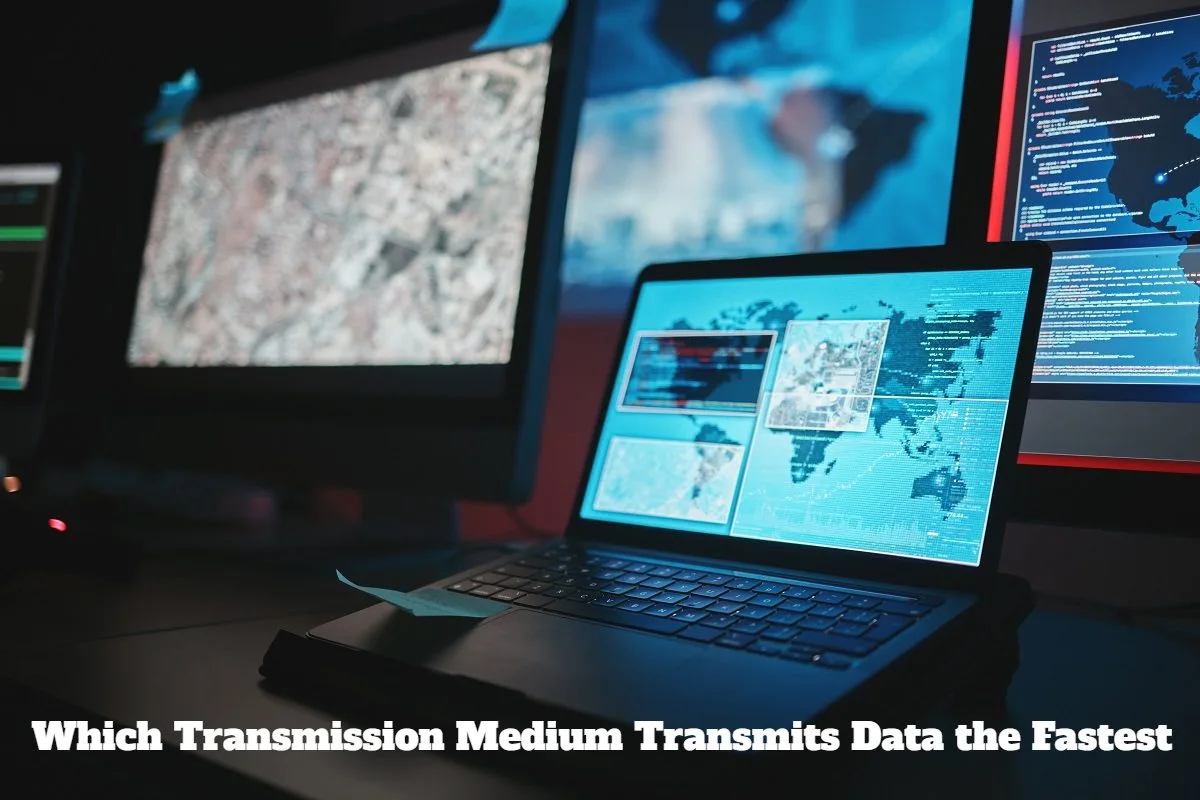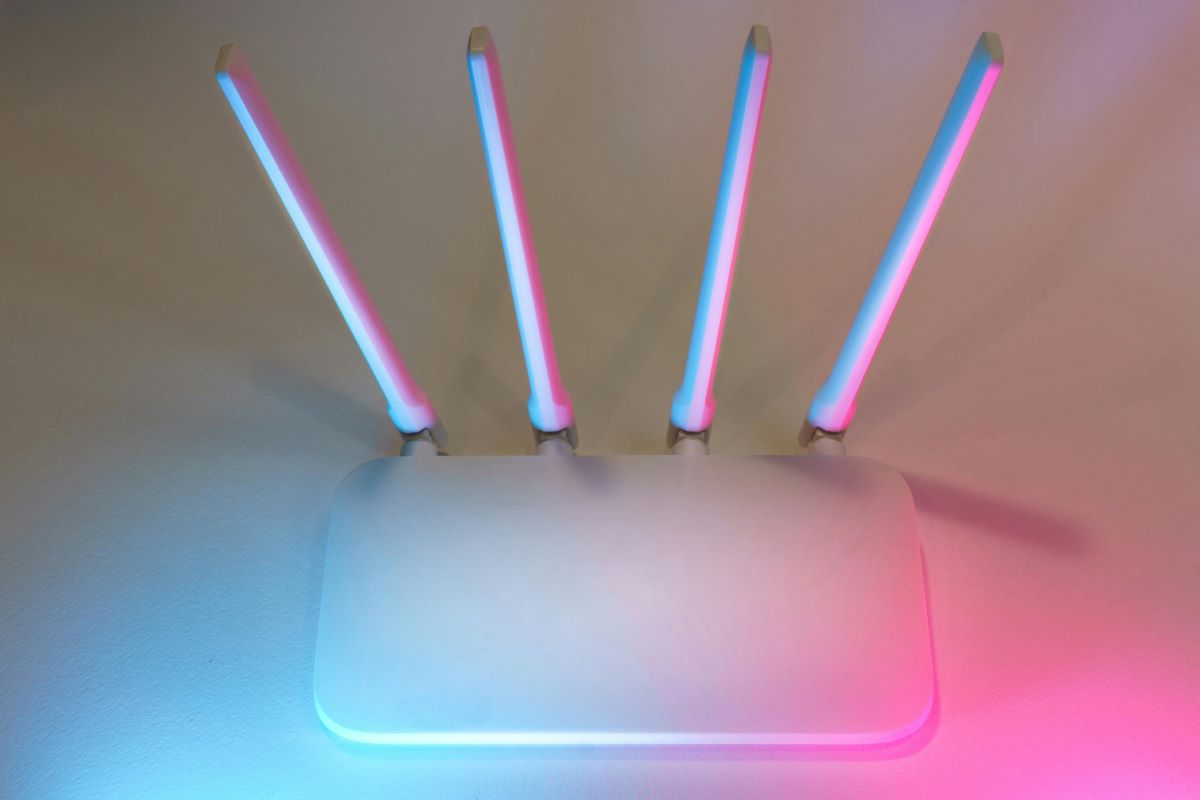The transmission medium for data is like the road data travels on. These can be copper wires, fiber optics, or even wireless signals. These roads help move data from one place to another, just like the Internet gets to your computer or phone. Different roads are used depending on how far and how fast the data needs to go. If you are wondering which transmission medium transmits data the fastest, then here is everything you need to know.
The last two weeks have been a huge headache for me due to my slow internet network. I have to delay a lot of my work due to network issues. It felt like I had been living in the early 19s with that much slow internet. To improve internet speed, I shifted to a fast network. But before changing it, I did deep research on which transmission medium transmits data the fastest. You may be thinking they are not directly connected, but let me clarify that transition mediums have a significant impact on the speed and performance of an internet connection. So let’s discuss it.
Types of Transmission Medium
Before learning which transmission medium transmits data the fastest.
First, let me share the information on the type of transmission. Transmission media is classified into the following types:
- Guided Media
- Unguided Media
Guided Media
Guided Media is referred to as wired or bounded transmission media that works by sending signals through physical connections in a confined pathway. Here are its main characteristics:
- Fast Transmission
- Secure Communication
- Ideal for Shorter Distances
In Guided Medium, we further get three types of transmission medium that are:
Twisted Pair Cable
Twisted Pair Cable is a common type of guided media. Often, pairs of these wires are tied up with each other within a secure covering. Twisted pair cable is extremely popular for data transmission and comes in two main types:
Unshielded Twisted Pair
It is composed of two insulated copper wires that are tangled together. UTP resists interference without relying on a physical shield. It’s commonly employed for telephone communication purposes. To find the answer to which transmission medium transmits data the fastest, I have mentioned the pros and cons of different transmission media to give you a better understanding of it.
Advantages of Unshielded Twisted Pair
- Cost-Effective
- Simple Installation
- High-Speed Capability
Disadvantages of Unshielded Twisted Pair
- Vulnerable to External Interference
- Lower Capacity and Performance than Shielded Twisted Pair (STP)
- Limited Distance Transmission due to Signal Weakening (Attenuation)
Uses
UTP cables are utilized for telephone connections and Local Area Network (LAN) networks. They are versatile and well-suited for these communication applications due to their cost-effectiveness and adequate performance for voice and data transmission.
Shielded Twisted Pair
It is another variety of Twisted Pair Cable. Unlike UTP, STP features a special jacket, typically made of a copper braid or foil shield, which acts as a barrier to prevent external interference. STP finds its application in high-speed data networks, such as fast-data-rate Ethernet, and it’s also employed in voice and data channels within telephone lines.
Pros of Shielded Twisted Pair
- Superior Performance at Higher Data Rates Compared to UTP
- Effective Elimination of Crosstalk
- Relatively Faster Data Transmission
Cons of Shielded Twisted Pair (STP):
- More Challenging Installation and Manufacturing Process
- Higher Cost
- Bulkier in Size
Coaxial cables
Coaxial Cable is a type of transmission medium that consists of an outer plastic covering with an insulation layer made from materials like PVC or Teflon. Inside, it has two parallel conductors. Each has its own separate insulating protection covering. Coaxial cables are versatile and can transmit information in two modes:
Baseband Mode: In this mode, the entire cable bandwidth is dedicated to a single signal or channel.
Broadband Mode: Here, the cable bandwidth is divided into separate ranges to adjust multiple signals or channels simultaneously.
What are the pros and cons of Coaxial Cable?
Pros
High Bandwidth: Coaxial cables provide generous bandwidth, which makes them suitable for transmitting high-quality audio and video signals.
Better Noise Immunity: They provide effective protection against external interference, which is why we get clear signals.
Easy Installation and Expansion: Coaxial cables are easy to install, so we can easily extend them to make additional connections.
The disadvantage of Coaxial Cable
Single Cable Failure Disruption: The one thing that I do not like about it is that the failure of one cable in a network can destroy the entire network. Therefore, the result could be a loss of service for many users.
Uses
- If we talk about audio, they are employed for transmitting high-quality digital audio signals, such as those used in home theater systems.
- Coaxial cables are important components of radio communication systems. Because they connect antennas to transmitters and receivers in applications such as amateur radio and broadcasting.
These versatile cables are valuable for their ability to transmit various types of signals effectively.
Optical Fiber Cable
Optical fiber cables are utilized to transfer huge amounts of information.
These cables use the principle that light passes through a core, which is usually made of glass or plastic. This core is covered with glass or low-density plastic cladding.
Fiber cables can operate in either unidirectional or bidirectional modes.
Unidirectional Mode: In this mode, data flows in a single direction with a fiber cable.
Bidirectional Mode: Bidirectional mode allows data transmission in two directions over the same optical fiber.Which doubles the capacity.
Pro of using Optical Fiber Cable:
Increased Capacity and Bandwidth: Optical fiber cables can carry large amounts of data. Which makes them ideal for complex infrastructure.
Resistance to Corrosive Materials: They are resistant to corrosive substances, So their durability in various conditions is excellent.
Cons of fiber cables
High-Cost: Optical fiber cables are relatively expensive
Fragile: Optical fibers can be fragile and physically impaired if not handled carefully. Therefore, we should be more careful when handling it during installation and maintenance.
Applications of Optical Fiber Cable:
- Utilized in various medical instruments.
- Employed for aerospace data transmission.
- Key in internet cable infrastructure.
Guided media also includes Stripline and Microstrip as well.
Unguided Media
Now, let’s discuss unguided media, which is our second type of data-transmitting medium. One of the most common examples is wireless. It doesn’t rely on a physical medium for transmitting electromagnetic signals. The wireless like Walkie Talkies that we often see police officers use is an example of it.
Here are some characteristics:
- They are a bit less secure than guided media.
- Unguided mediums are Suitable for longer-distance communication.
Additionally, there are three types of signals that unguided media transmit:
- Radio waves
- Microwaves
- Infrared waves
Conclusions
If you are still wondering which transmission medium transmits data the fastest, Let me conclude it for you. In my opinion, it is optical fiber cables that transmit data the fastest. Since Optical fiber cables are famous for their exceptional data transmission capabilities. That is why we use them widely in telecommunications, internet connections, and high-speed data networks.




